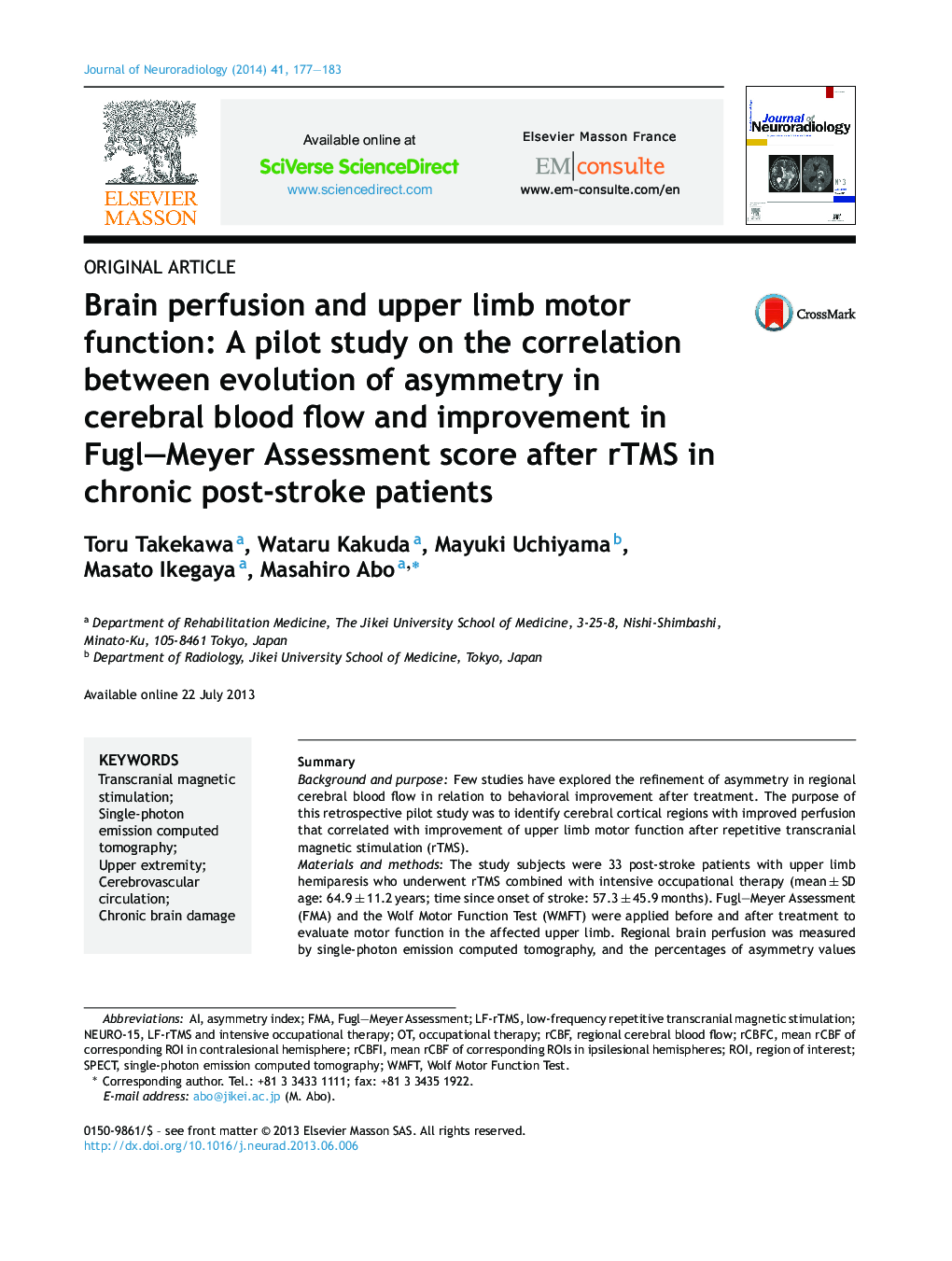| Article ID | Journal | Published Year | Pages | File Type |
|---|---|---|---|---|
| 4233792 | Journal of Neuroradiology | 2014 | 7 Pages |
SummaryBackground and purposeFew studies have explored the refinement of asymmetry in regional cerebral blood flow in relation to behavioral improvement after treatment. The purpose of this retrospective pilot study was to identify cerebral cortical regions with improved perfusion that correlated with improvement of upper limb motor function after repetitive transcranial magnetic stimulation (rTMS).Materials and methodsThe study subjects were 33 post-stroke patients with upper limb hemiparesis who underwent rTMS combined with intensive occupational therapy (mean ± SD age: 64.9 ± 11.2 years; time since onset of stroke: 57.3 ± 45.9 months). Fugl–Meyer Assessment (FMA) and the Wolf Motor Function Test (WMFT) were applied before and after treatment to evaluate motor function in the affected upper limb. Regional brain perfusion was measured by single-photon emission computed tomography, and the percentages of asymmetry values (asymmetry index [AI]) for 52 bilateral regions of interest were calculated. The change in AI was calculated as the post-intervention minus pre-intervention values.ResultsChanges in AI in the superior and middle frontal areas correlated significantly and negatively with changes in FMA score (superior: r = −0.406, P = 0.03, R2 = 0.251; middle: r = −0.437, P < 0.001, R2 = 0.306), but not with changes in WMFT log performance time.ConclusionChanges in AI less than zero reflect improved perfusion, suggesting that upper limb motor function improvement in post-stroke patients reflects evolution of brain perfusion in the superior and middle frontal areas.
